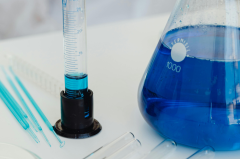To be clear, a disclaimer is necessary here. I am not taking methylene blue, nor am I financially intertwined with any company that sells this substance. It’s not endorsed by the TGA and you won’t find it in any health food shop in this country. But I recently attended a conference of the medical eclectics where all the subterranean buzz was about the protean benefits of methylene blue. Also, one of my more avant-garde patients has been importing this potion and concocting his own formulation in his home laboratory (he is a Mensa). This is why I’ve decided it was time I got jiggy with the science of this new “longevity wonder drug”.
Methylene blue’s first iteration was as a textile dye in 1876. Since then, it’s morphed into an omnipotent drug with a wide range of applications: to stain surgical slides; medicate malaria; operate as an antiseptic; treat cyanide poisoning; and manage a condition called methemoglobinemia, a rare ailment that alters the capacity of haemoglobin to deliver oxygen to our tissues, which is reversed once this substance is administered. In the anti-ageing arena, it’s surfaced as a master antioxidant capable of neutralising free radicals, those supposed principal instigators of bodily degeneration, which is thought to be a major boon for our brains where free radicals are generated at a rapid rate as oxygen is utilised to generate energy.
Although scientists are still uncovering the mysteries that surround the origins of Alzheimer’s disease-damaged mitochondria, our cellular batteries, where oxygen cycles through a progression of biochemical pathways to make energy, and the accumulation of potentially destructive proteins called amyloid beta and tau are possibly the prime drivers of this disorder. Research suggests that methylene blue — by corralling free radicals and ramping up the elimination of amyloid beta and tau protein — can help to salvage mitochondrial function, which mig





